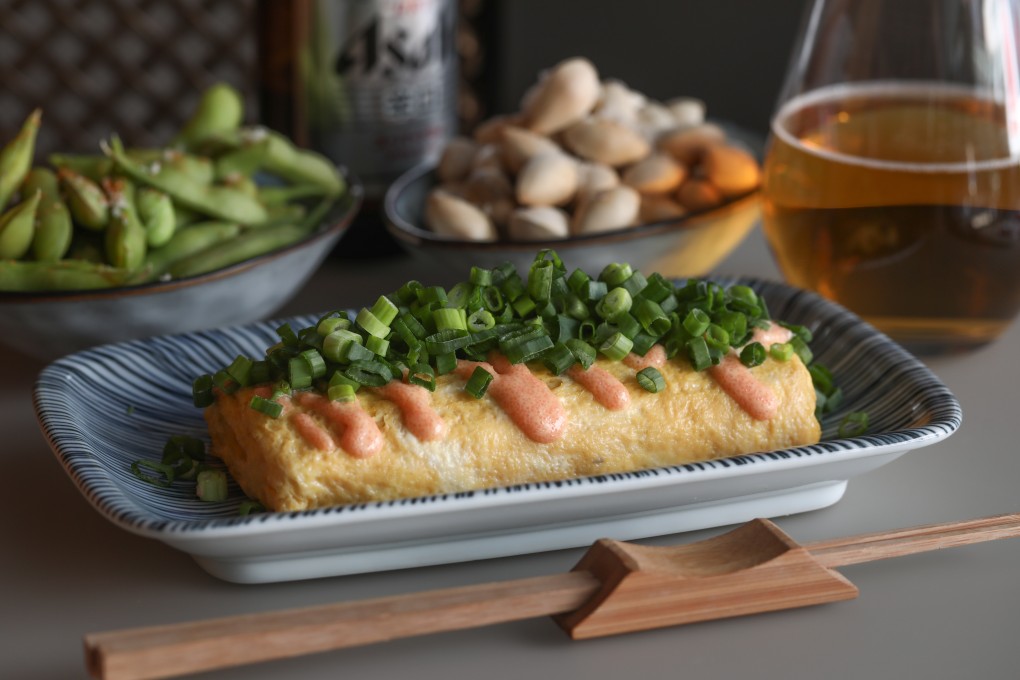How to make tamagoyaki Japanese omelette with mentaiko, shiso leaf and cheese
- Perfecting the Japanese ‘grilled egg’ takes a little time but the rewards are well worth the effort
- The addition of fish roe, shiso leaf and cheese elevates the dish beyond the basic

Tamagoyaki translates as “grilled egg”, although most of the time it’s prepared in a special rectangular pan, instead of on a griddle.
The omelette has different shapes, flavours and textures, depending on where you’re eating it. In inexpensive sushi restaurants, it’s usually served as a topping for vinegared rice and is often far too sweet (for my tastes, anyway). At expensive sushiyas, it usually looks like a thick slab of pale yellow cake, and is complexly and subtly flavoured with ingredients such as mountain yam and shrimp – and is far more delicious than that might sound. Izakaya chefs get the most creative with tamagoyaki, rolling the egg around a variety of fillings.
Tamagoyaki with mentaiko, shiso leaf and cheese
At its most basic, tamagoyaki is made by pouring a thin layer of egg whisked with other ingredients into the rectangular pan and cooking until it’s set on the bottom but still moist on the surface, then it’s rolled towards you and pushed to the other side of the pan. Another layer is poured into the pan, the egg is rolled over that, increasing the girth, then again, pushed to the other side of the pan. Another layer is poured in and the omelette is rolled over that, until all the egg is used.
It’s a little tricky to make, especially the first layer. Chefs roll it by flipping the pan with a flick of the wrist, using chopsticks to guide the egg so it rolls over on itself. I cheat, and use a metal spatula to roll the egg. Your first rolled tamagoyaki might look misshapen, but you’ll soon get the hang of it, and anyway, it will still taste good. Resist putting in too much filling, though, or it will ooze out of the sides.
This recipe combines two versions that have stood out in my taste memory. I ate one at an okonomiyaki restaurant in Shimonoseki, in Japan, and the other at a kushiyaki (fried skewers) place called JunG39, in Hong Kong. The first was rolled around cheese and shiso leaf, and the chef cooked it by pouring the egg in a long, somewhat nebulous shape onto a griddle instead of using a tamagoyaki pan. He managed to roll the egg into a surprisingly neat rectangular shape, scattered tenkasu (fried tempura batter bits, also called agedama) on top, then poured dashi broth over it. While it wouldn’t win points for looks, it tasted delicious. The version at JunG39 was rolled around mentaiko and cheese, then drizzled with mentaiko mayo.
Use inexpensive low-moisture mozzarella for this – the pre-grated kind is perfect. You can also use individually wrapped cheese slices.
